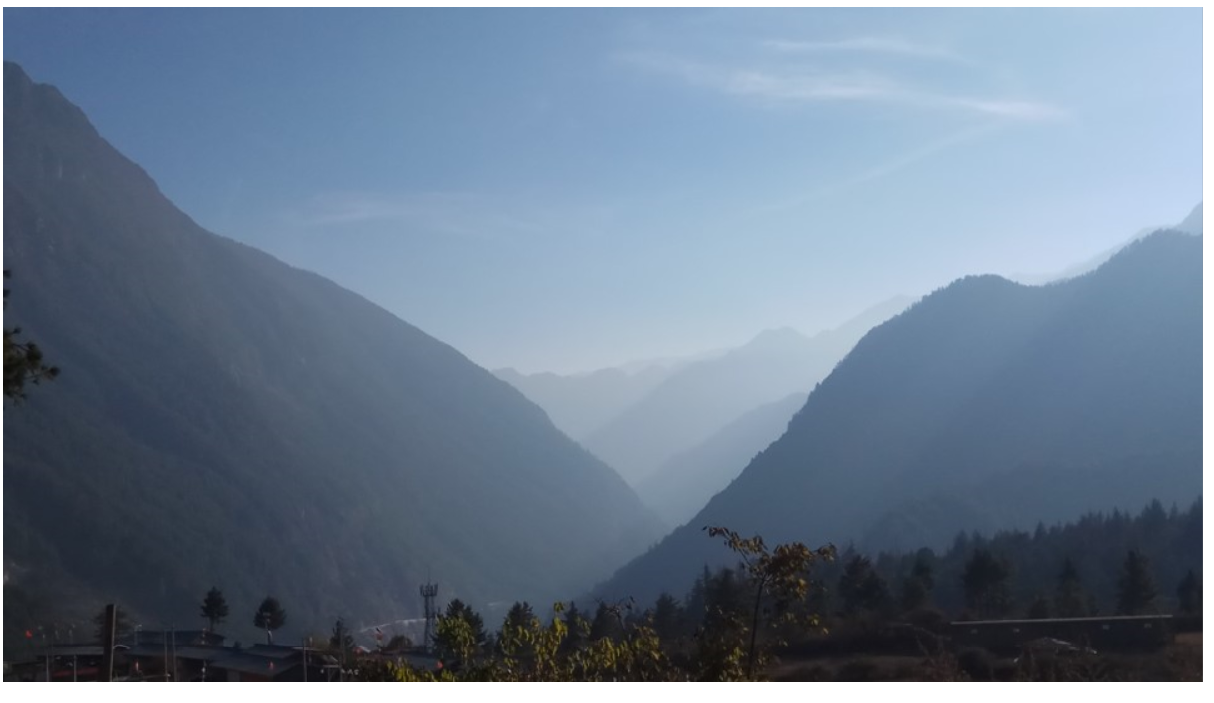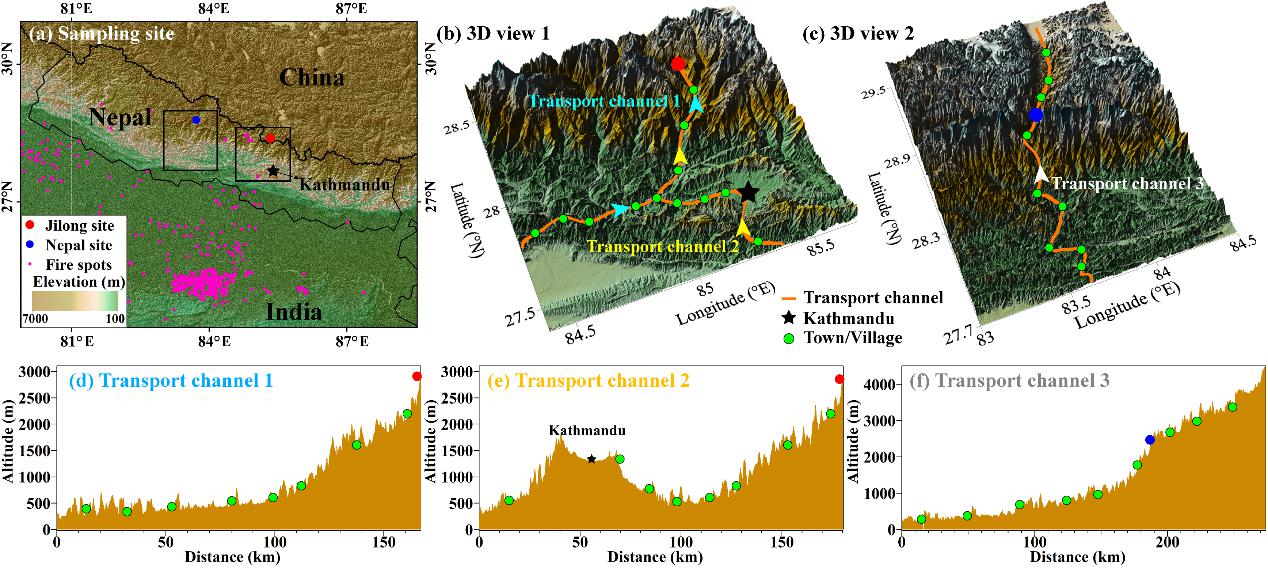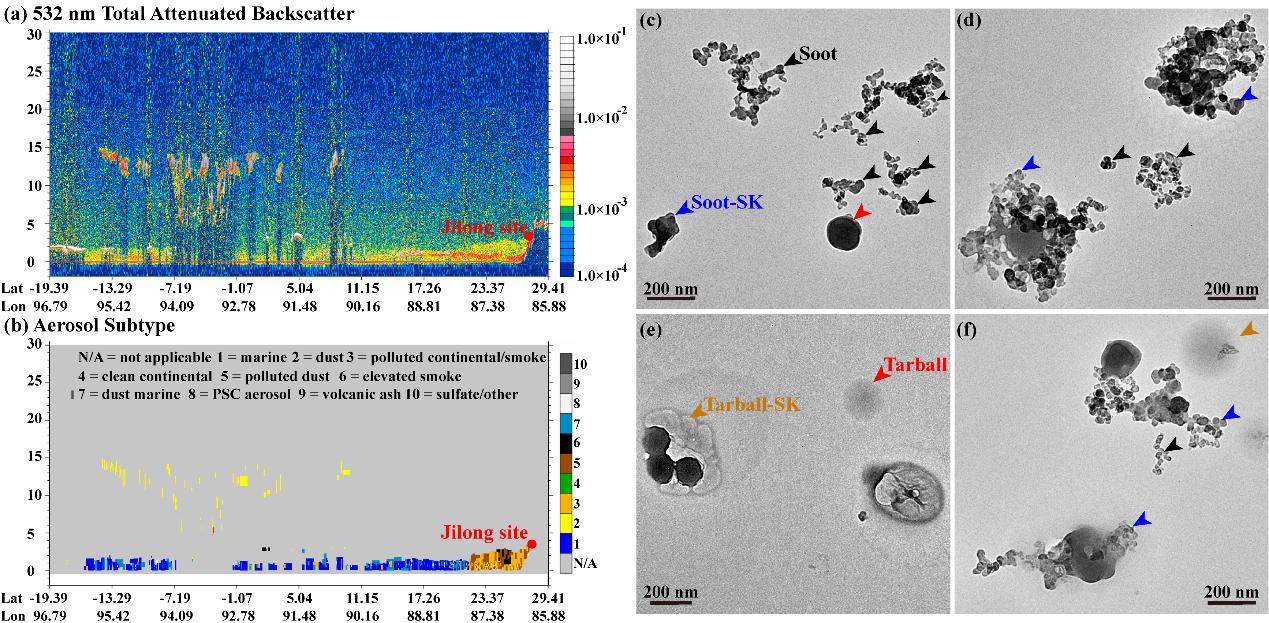Editor: 邵丹蕾 Author: Yuan Qi Time: 2020-09-21 Number of visits :195
The new study of Prof. Weijun Li’s group has been published online byJournal of Geophysical Research-Atmospheres: In-situ Observations of Light-absorbing Carbonaceous Aerosols at Himalaya: Analysis of the South Asian Sources and Trans-Himalayan Valleys Transport Pathways.

Figure 1. A photo of an atmospheric pollutants layer in a trans-Himalayan valley during observation period.
The Himalaya-Tibetan Plateau (HTP), known as the “third pole” on earth, exerts an important influence on the Asian monsoon and the global climatic change. The HTP is far away from the intensive anthropogenic activities and is considered as one of cleanest but the most vulnerable regions on earth. The south margin of the Himalaya-Tibetan Plateau (HTP) is crisscrossed with hundreds of river valleys within high mountain ranges. A few model studies have shown that the anthropogenic atmospheric pollutants like carbonaceous aerosols either from the South Asia or from the local residential emissions in the valleys can be uplifted into the HTP along the trans-Himalayan valleys. However, to date, there were rare direct aerosol data to reflect what and how carbonaceous aerosols are transported from the South Asia to the HTP along the valleys due to the desolate environments with harsh weather conditions and power shortages in the remote valleys.

Figure 2. Locations of sampling sites, 3D views of the trans-Himalayan valleys and altitude cutaway views of transport channels.
Individual particle analysis is a powerful and effective method with unique advantages in collecting aerosol samples and tracing particle sources at the remote region. In this study, two field campaigns with individual particle collections were conducted in the middle of two typical trans-Himalayan valleys in December of 2017. Electron microscopy was subsequently used to investigate the micro-morphological characteristics of individual particles. Interestingly, we found that 49%~70% of thousands of particles were light-absorbing carbonaceous aerosols including soot-bearing and tarball-bearing particles. The dominant sizes of soot-bearing and tarball-bearing particles were 151-370 nm and 198-255 nm, respectively.The WRF-Chem model and wind field analyses show that the intense regional air pollution with high mass concentrations of light-absorbing carbonaceous aerosol occurred in the South Asia and southwest wind normally prevailed along the trans-Himalayan valleys in the afternoon of each day during wintertime. Backward trajectory and CALIPSO data further confirm that these light-absorbing carbonaceous aerosols from the South Asia were transported to the southern HTP. These carbonaceous aerosols exhibited significantly internally mixing with secondary sulfates.

Figure 3. CALIPSO vertical profiles of (a) 523 nm total attenuated backscatter coefficient (km-1sr-1) and (b) aerosol subtype from 15:28 to 15:42 (Beijing time) on 13 December, 2017. (c-f) TEM images of the individual samples at 16:30 (Beijing time) on 13 December, 2017.
The first author of this study is Qi Yuan, a post doctor in Prof. Weijun Li’s group, and the corresponding author is Prof. Weijun Li. This work was funded by National Natural Science Foundation of China, China Postdoctoral Science Foundation, Zhejiang Provincial Natural Science Foundation of China, and the Research Funding of School of Earth Sciences of Zhejiang University.
Citation: Yuan, Q., Wan, X., Cong, Z., Li, M., Liu, L., Shu, S., et al. (2020). In situ observations of light‐absorbing carbonaceous aerosols at Himalaya: Analysis of the South Asian sources and trans‐Himalayan valleys transport pathways. Journal of Geophysical Research: Atmospheres, 125, e2020JD032615.
Paper download: https://doi.org/10.1029/2020JD032615.
